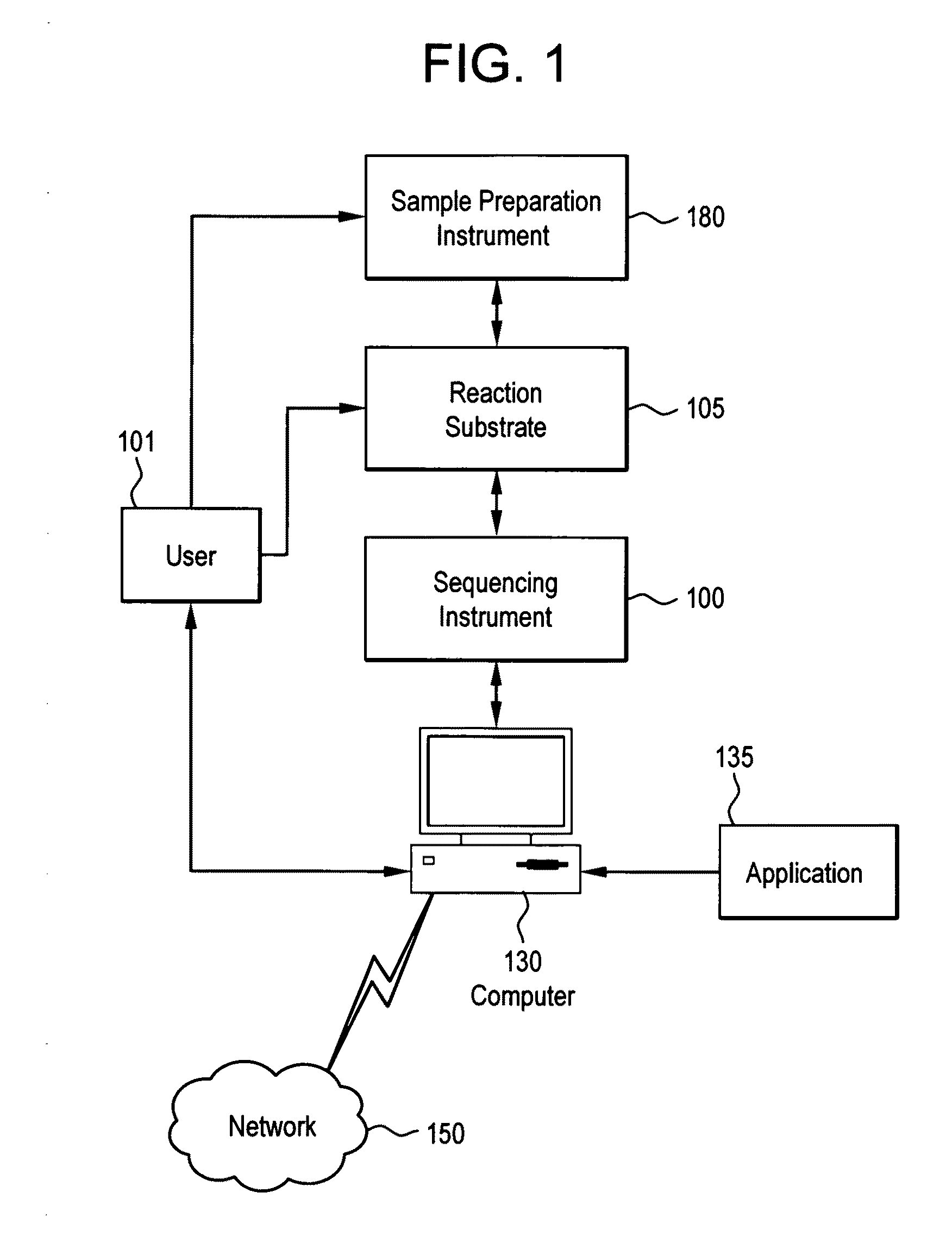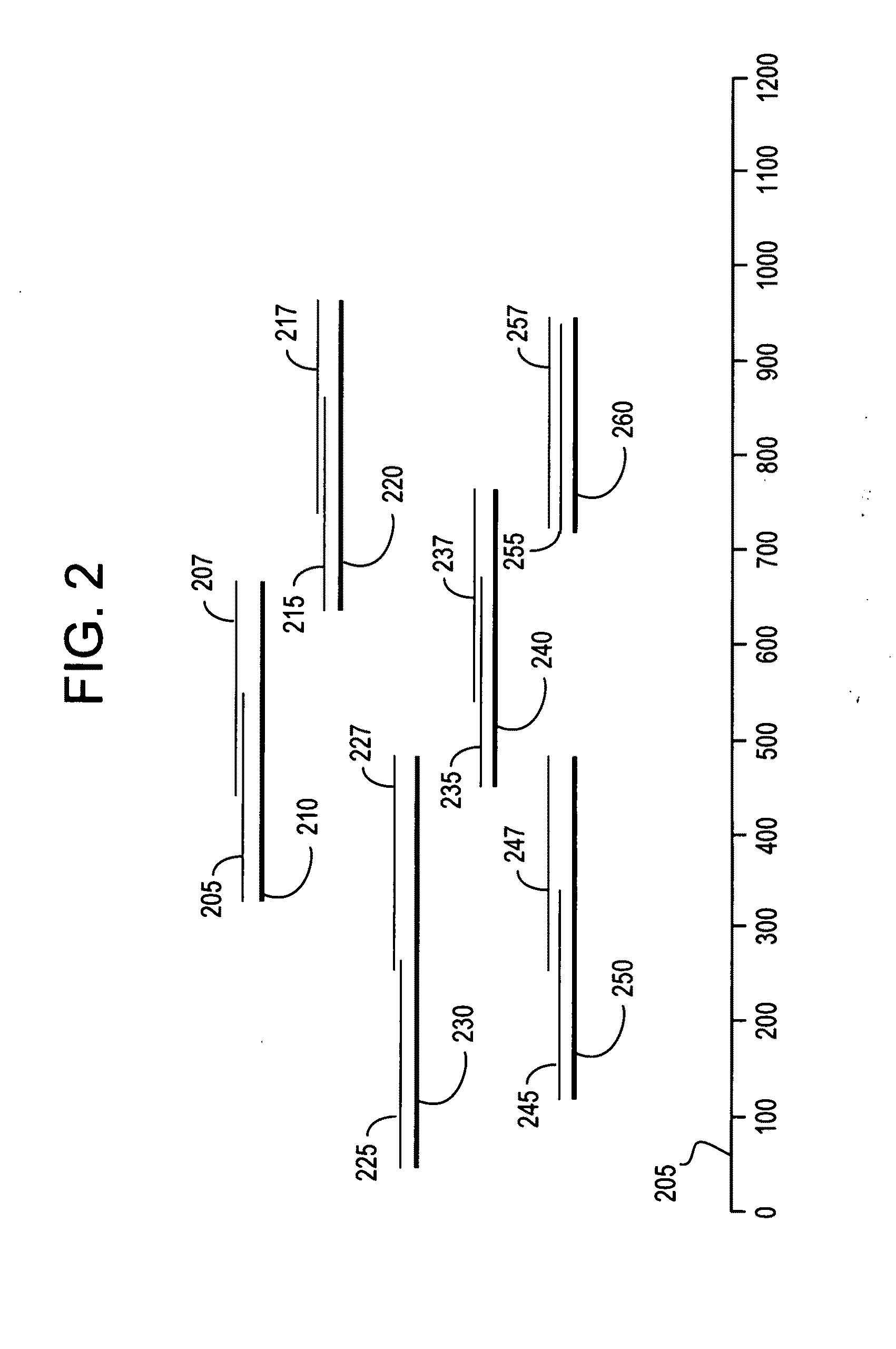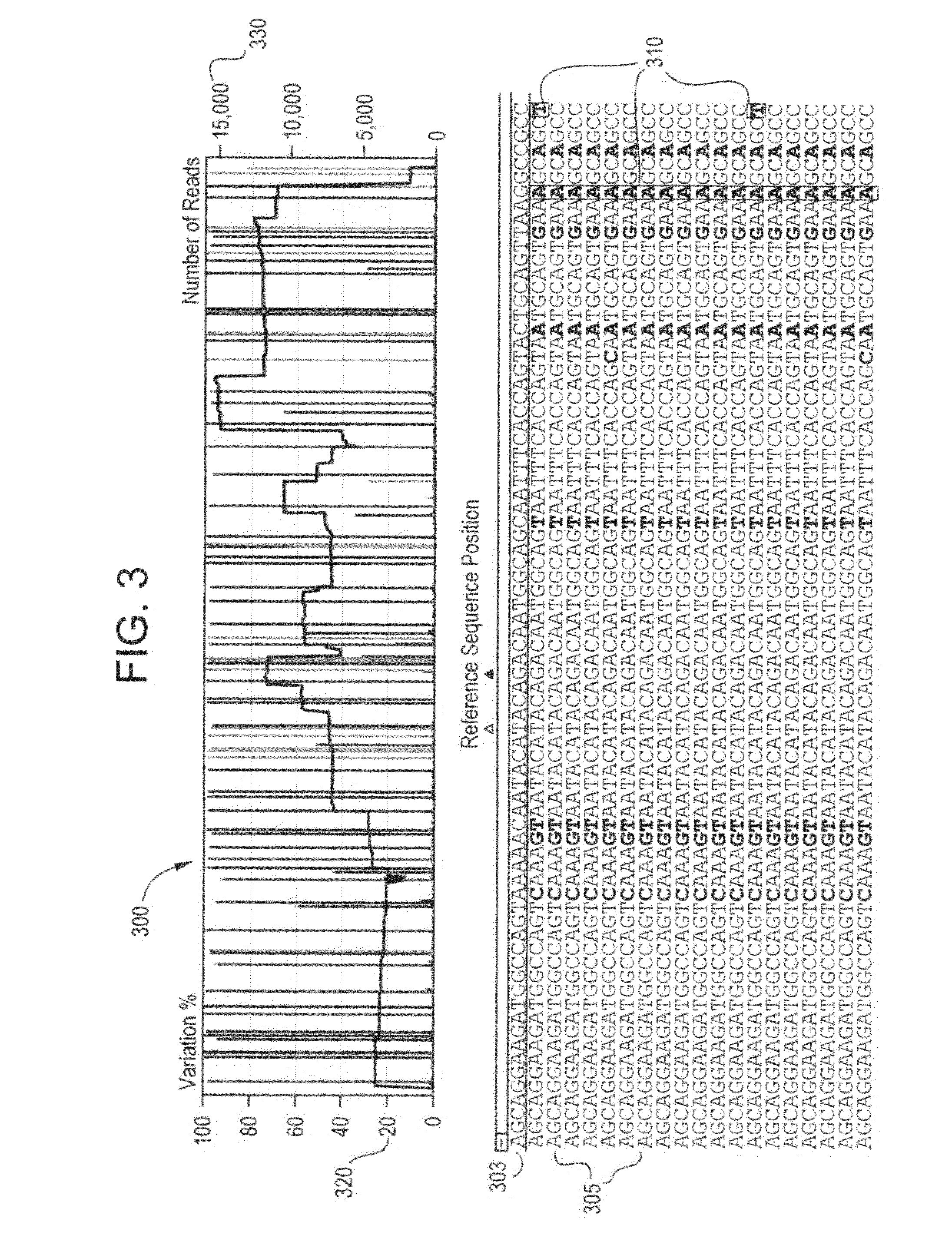System and method for detection of HIV integrase variants
a technology of integrase and detection method, which is applied in the field of systems and methods for detecting sequence variants, can solve the problems of high labor intensity of previously employed clonal analysis assays, and large-scale hiv genome mutations
- Summary
- Abstract
- Description
- Claims
- Application Information
AI Technical Summary
Benefits of technology
Problems solved by technology
Method used
Image
Examples
Embodiment Construction
[0018]As will be described in greater detail below, embodiments of the presently described invention include systems and methods for designing target specific sequences or primer species specific to HIV variants, and using those primers for highly sensitive detection of sequence variants.
a. General
[0019]The term “flowgram” generally refers to a graphical representation of sequence data generated by SBS methods, particularly pyrophosphate based sequencing methods (also referred to as “pyrosequencing”) and may be referred to more specifically as a “pyrogram”.
[0020]The term “read” or “sequence read” as used herein generally refers to the entire sequence data obtained from a single nucleic acid template molecule or a population of a plurality of substantially identical copies of the template nucleic acid molecule.
[0021]The terms “run” or “sequencing run” as used herein generally refer to a series of sequencing reactions performed in a sequencing operation of one or more template nucleic...
PUM
 Login to View More
Login to View More Abstract
Description
Claims
Application Information
 Login to View More
Login to View More - R&D
- Intellectual Property
- Life Sciences
- Materials
- Tech Scout
- Unparalleled Data Quality
- Higher Quality Content
- 60% Fewer Hallucinations
Browse by: Latest US Patents, China's latest patents, Technical Efficacy Thesaurus, Application Domain, Technology Topic, Popular Technical Reports.
© 2025 PatSnap. All rights reserved.Legal|Privacy policy|Modern Slavery Act Transparency Statement|Sitemap|About US| Contact US: help@patsnap.com



